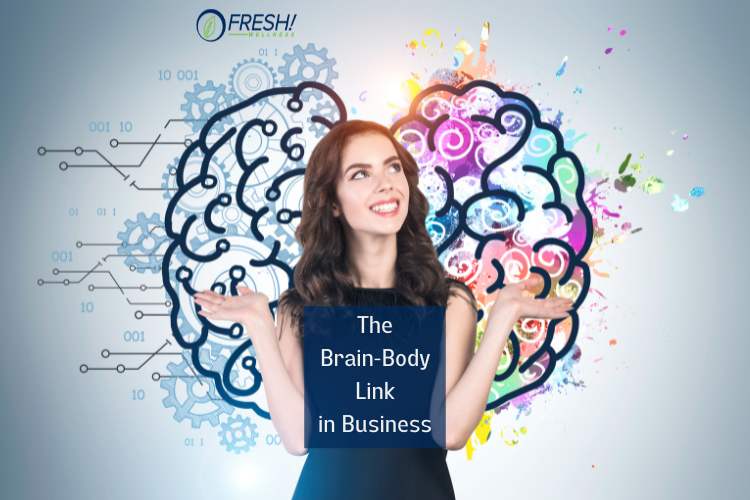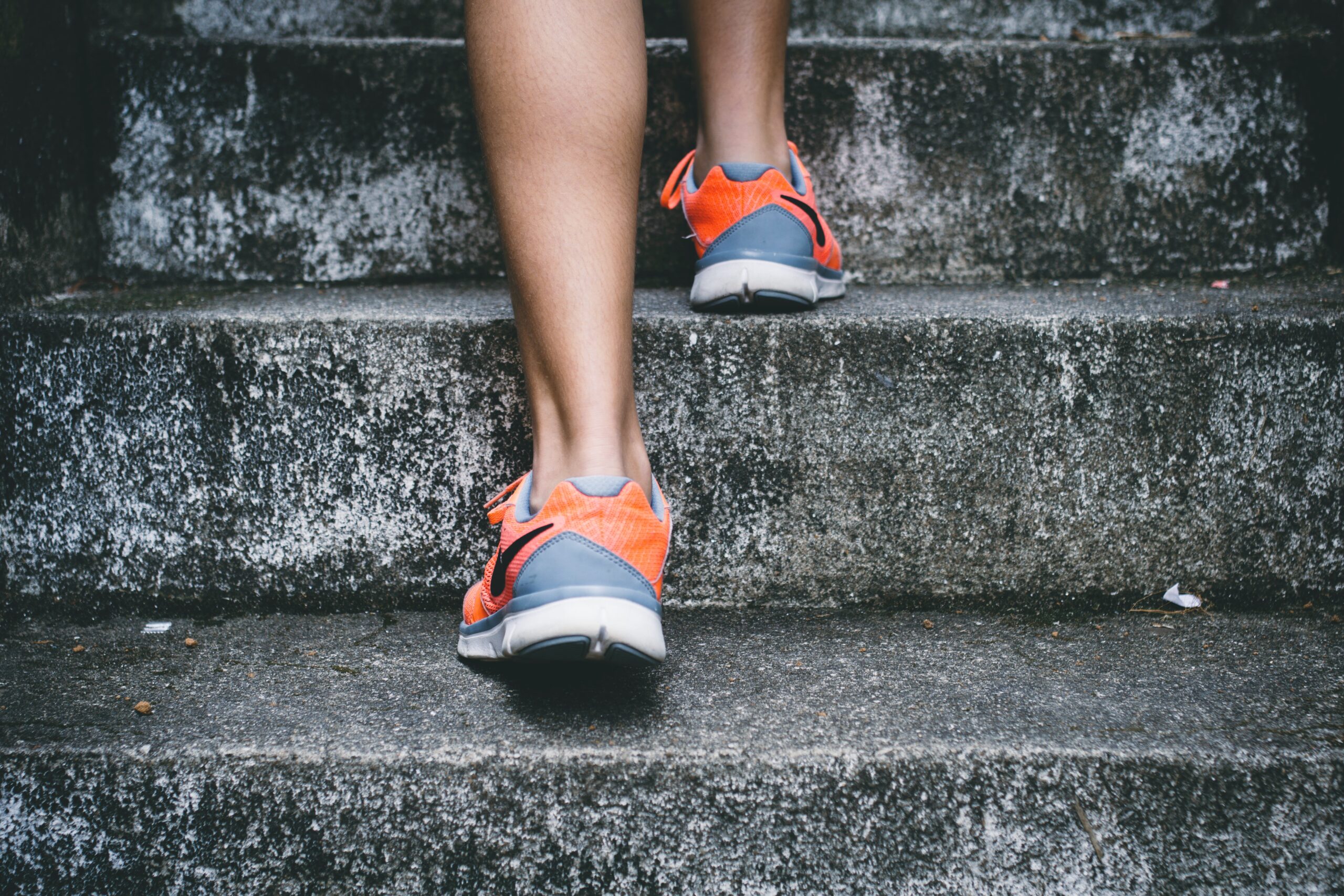
The Brain-Body Link in Business (Part 1 of 2)
Brain Power
Most people would agree that the human brain is a key component to business success, yet…few people would say the same thing about their body. But the fact is, the brain and body are intimately connected and work together to help us perform at our best.
So, what if I told you there was a simple solution to the mental, physical and organizational health issues that we currently face?
This includes things like:
Poor productivity, negative work stress, employee disengagement, absenteeism, presenteeism, and rising health care costs
Even better...what if I told you that this solution doesn’t require any expensive technology, advanced education, massive cost outlays, and could even lower our taxes!
Every human already has the built-in capability to do it, starting now!
I’ve seen the power of this transformation in people, families, and businesses and it never fails to blow my mind with its simplicity and effectiveness.
So what is this futuristic “miracle cure”?
Movement, yes…moving your body. Movement is literally life.
In fact, an important component of defining death is a lack of movement at the cellular level and an absence of neural signals between the brain and body. I want to inspire you to implement these strategies in your personal and professional lives.
The undeniable fact is that the human body evolved to move, yet today we are more sedentary than ever. As a species, I believe we’ve reached a critical point in our evolution and it’s having a profound impact on every aspect of our health, work, and community. At the heart of this issue is the fact that technology and modern lifestyle habits have changed faster than human physiology. This widening gap is literally killing us
Learning from the Past
To better frame our current situation, let’s look at our evolutionary past.
For as long as humans have been on the planet, our survival has depended on us being able to move. Whether it was hunting, gathering, fighting, fleeing, or some other activity, movement was critical.
Even in more recent history, physical labour was our primary source of activity. Because of this, the human body has evolved to optimize brain function, hormone levels, and ultimately survival around movement and activity. Yet, it’s only been the past 60-70 years that we’ve been sedentary as a society. This trend has accelerated dramatically in the past 30 years.
These days we move less than at any other time in history.
Movement has gone from a literal survival skill to a lifestyle choice, unfortunately, our physiology hasn’t made that shift and it’s creating havoc for our health and performance.
Thanks to medical advancements, we are living longer, but most humans are unhealthy, less physically capable, and despite much higher economic standing, less fulfilled with life
Our current situation and what it means for the future
One of the silver linings of this pandemic has been to shine an even brighter spotlight on how important movement is in our health, happiness, and life. Pre-pandemic our society was very sedentary with less than 20% of people being active enough to experience health benefits. Since the pandemic began, global activity levels have plummeted further, leading to increased anxiety, depression, and serious health risks.
Unfortunately, while daily movement improves almost every aspect of health, happiness, and life, most of modern society is designed to set us up for failure in these areas. We just have to look around us and at the grim stats to see that our current approach is failing us.
- In the developed world, 2 out of every 3 people are either overweight or obese, and now more people are obese than overweight.
- 80% of the death we experience comes from preventable causes (aka “lifestyle” diseases)
I joined the fitness industry over 30 years ago to help people be healthier and fit. Since that time, the obesity rate has tripled and people are less healthy than ever. I’m working hard not to take it personally! This deep purpose and the ability to make a positive impact on so many people and communities continues to drive my life and career today!
So how do we fix this? What changes can we make?
Since everything begins with a single person turning their thoughts into action, let’s start our discussion at the individual level.
Lao Tzu famously said that “a journey of a thousand miles, begins with a single step.”
A smart first step often involves learning and gaining perspective on your journey. To help my clients better understand movement and strategically incorporate it into their daily life, I created a simple model called “The Movement Spectrum”.
 The Movement Spectrum
The Movement Spectrum
The movement spectrum is also the foundation for how businesses, communities, and governments can strategically harness the power of movement.
The 5 components are:
- Movement
- Activity
- Exercise
- Fitness
- Performance
The great news is that the first three are the most important, and the other two are completely optional.
As the name suggests, it all starts in Phase 1 with “Movement”
Movement
I define movement as “actively taking every joint in your body through it’s full range of motion”. This is ideally done multiple times per day. Now, if this sounds daunting already, the great news is that it can be done in seconds.
So why is movement so important?
The benefits are almost endless, but at the most basic level, adding a simple movement habit to your daily life provides an amazing boost to cognition, creativity, focus, productivity, injury reduction and much more.
When we don’t move, we begin to lose function. We can see this in action at the end of every work day or after a long car ride, people are tight, restricted, and riddled with aches and pains, and this is just a single day. Add decades of neglect together and we end up with a society rife with aches, pains, injury, and disease.
One of the first homework assignments I give clients is to do what I call a “mobility minute”. It’s approximately one minute where you focus on actively moving all your joints through their full range of motion. Start at your head and work down to your feet, spending a few seconds at each major area.
To build the habit, and lower the barrier of entry, I say, “do 1 minute in the morning, as soon as your feet hit the floor. Then, do another minute as the last thing in your day before you crawl into bed. If those are the only two minutes of movement you get in the day, then you are still ahead of 99% of the world.
Once we are consistently moving and mobilizing, it prepares our body to better experience life. Every other phase of the movement spectrum becomes easier and less painful. This may show up in your day as a mobility minute in the morning and evening and a couple 10-20 second targeted mobility sessions each hour throughout the day.
If that’s all you do, you will notice a tremendous improvement in how you feel and function each day.
Activity
This is simply our “activities of daily living, also known as ADL’s. Things like getting out of bed, brushing your teeth, walking around your house, taking a leisurely walk, or doing some manual labour.
Our ancient ancestors had to walk for hours to hunt or harvest food, but now we just open InstantCart or Skip The Dishes and food magically shows up. Due to the pandemic, activity levels across most of society have been decimated and it’s no wonder so many people are facing mental and physical challenges.
You may be familiar with this concept already because it’s where the 10,000 step guideline came from. This is important because among many other benefits, being more active improves your mood, lowers blood pressure, reduces stress and boosts brain function.
There are plenty of simple ways to add more activity throughout your day, including:
- Taking the stairs instead of the elevator
- Walking up the escalator instead of standing on it and staring at your phone
- Going for a morning or evening walk (or both)
- Or parking further from the store
2 simple steps to help you build a solid movement and activity habit
- Step 1 is shift your mindset around movement and activity by embracing the fact that these small daily actions add up to huge long term improvements
- Step 2 is to put your new mindset into action.
Exercise
EXERCISE is simply ACTIVITY done above your baseline of intensity, the even better news is that your baseline is yours alone.
It doesn’t even matter what type of activity you do, the goal here is to elevate your heart rate and ideally get a bit of a sweat going at least a few times per week. If you normally walk, do some of your walks at a pace fast enough to get you breathing heavier, if you take the stairs at the office, do a few more flights, or take them faster.
At the most basic level, anything above baseline is beneficial. For optimal results, the recommended amount is 150 minutes of moderate to vigorous physical activity (MVPA) each week.
FITNESS is simply EXERCISE done with a specific purpose in mind
For example, you may choose to add more emphasis on building muscle strength, improving cardiovascular performance, or maybe power output. The key to fitness is that you target and measure these aspects during your fitness sessions.
PERFORMANCE is just FITNESS done in a competitive environment. Usually against time or an opponent.
There’s often a much higher level of intensity in these last two phases. For our ancient ancestors, this would have involved hunting, fighting or fleeing. While critical for survival then, you don’t need them for basic health and well-being. These days fitness and performance are great as a personal challenge, to compete in a sport, or for demanding jobs that require higher levels of physical function.
The challenge comes when people skip the first phases and jump right into fitness or performance.
Today, we see this all the time. I call it “weekend warrior syndrome” and it’s a key reason why physiotherapists are so busy! Our ancient ancestors didn’t have this problem because their day was packed with movement and exercise, so fitness and performance were an easier progression.
When people who are sedentary, out of shape, and unhealthy decide to “Get fit and lose weight” they often “hit the gym” with intense fitness and performance workouts. Since they haven’t built a foundation of movement, activity, or exercise, butt kicking gym workouts actually create more issues like frustration, injury, and a failure mentality.
Sadly, much of society is set up to perpetuate this negative cycle.
This is one simple example of how the movement spectrum can be utilized, but it also applies to all other areas such as strength, endurance, and power. Keep in mind that the movement spectrum is progressive.
Skipping steps is a recipe for injury, failure, and frustration. That’s because the first three phases (Movement, Activity, and Exercise) form the health foundation that allows us to do all kinds of other cool sports and adventures.
When we reframe our daily life through the movement spectrum, we can see and harness opportunities every hour of the day to improve our health, happiness and performance
If you could benefit from assistance with integrating The Movement Spectrum into your work and life, please reach out. I would love to connect.
Think, Move, and Be Well
CEO
FRESH! Wellness Group
P.S. To read Part 2 of this article where we discuss the role leaders and companies play in The Movement Spectrum click here.
